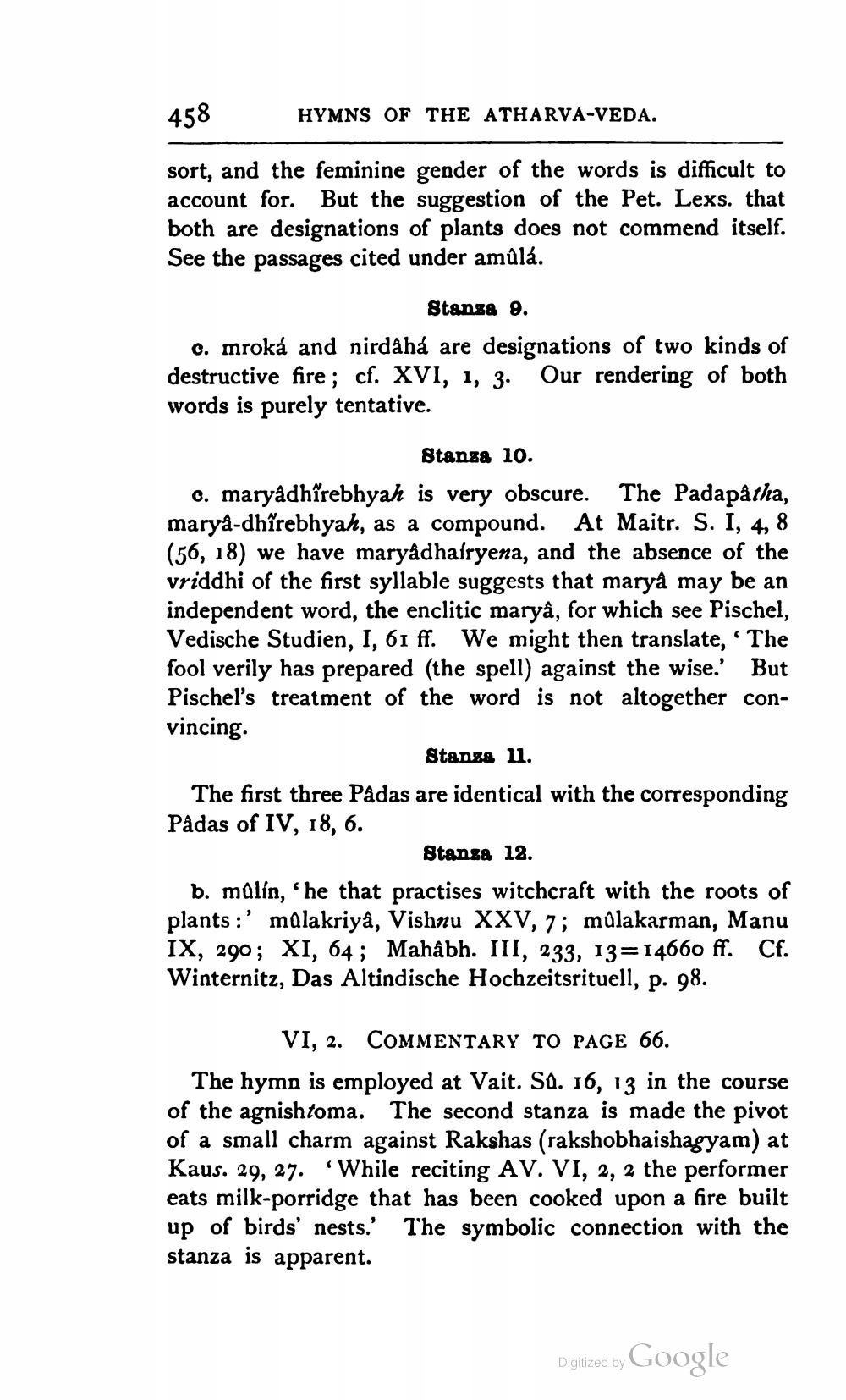________________
458
sort, and the feminine gender of the words is difficult to account for. But the suggestion of the Pet. Lexs. that both are designations of plants does not commend itself. See the passages cited under amûlá.
HYMNS OF THE ATHARVA-VEDA.
Stanza 9.
c. mroká and nirdâhá are designations of two kinds of destructive fire; cf. XVI, 1, 3. Our rendering of both words is purely tentative.
Stanza 10.
c. maryâdhîrebhyah is very obscure. The Padapatha, maryâ-dhîrebhyah, as a compound. At Maitr. S. I, 4, 8 (56, 18) we have maryâdhaíryena, and the absence of the vriddhi of the first syllable suggests that maryâ may be an independent word, the enclitic maryâ, for which see Pischel, Vedische Studien, I, 61 ff. We might then translate, 'The fool verily has prepared (the spell) against the wise.' But Pischel's treatment of the word is not altogether convincing.
Stanza 11.
The first three Pâdas are identical with the corresponding Pâdas of IV, 18, 6.
Stanza 12.
b. mûlín, 'he that practises witchcraft with the roots of plants: mulakriyâ, Vishnu XXV, 7; mûlakarman, Manu IX, 290; XI, 64; Mahâbh. III, 233, 13=14660 ff. Cf. Winternitz, Das Altindische Hochzeitsrituell, p. 98.
VI, 2.
COMMENTARY TO PAGE 66.
The hymn is employed at Vait. Sû. 16, 13 in the course of the agnishtoma. The second stanza is made the pivot of a small charm against Rakshas (rakshobhaishagyam) at Kaus. 29, 27. 'While reciting AV. VI, 2, 2 the performer eats milk-porridge that has been cooked upon a fire built up of birds' nests.' The symbolic connection with the stanza is apparent.
Digitized by
Google




